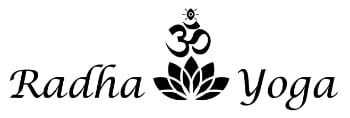
06 Aug Why Yoga And Vegetarianism/Veganism?
So often new students of yoga or those who do yoga often hear us teachers who practice vegetarianism or veganism as well as the social media promote, push and guide serious yoga practitioners to develop a plant based lifestyle. Why? The reasons will make sense to you (hopefully) and allow you to also at least be educated and more knowledgeable as to why Yogis follow a non harming Ahimsa diet, living more consciously than our fellow carnivores.
Firstly, it is down to the Yama mentioned above, “Ahimsa”. Ahimsa means non harming. It is the very first conduct in the Yamas, the ethical rules or observances and the 1st Limb of the 8 Limbs of Patanjali’s Ashtanga Yoga. It is proved by our previous “Seers” and “Rishis” of yoga that if this one Yama is mastered then the other 4 Yamas fall into place naturally; Satya (Truthfulness) Asteya (Non Stealing) Brahmarcharya (Right use of Energy) and Aparigraha (Contentment, non greediness). Since Ahimsa is there at the very top it encourages those who practice yoga to partake as much as they can towards non harming in everything and in anything (most of the time). Non Violence is the essential part of Yoga, therefore, most (not all) follow a vegetarian or vegan diet. Why? Well…. A yogi strives to live harmoniously with the Earth. Showing compassion towards all beings navigates our karma. If killing and slaughtering is favoured whether for food or for sports (hunting) then it resolves into the same for you in future births (reincarnation). Lets not even talk about Karma and Reincarnation for the sake of those who do not believe in this idea; Lets then gear towards the harm created to our Mother Earth (last week’s focus) in terms of Global Warming and the toxins and gases created from factory farming these animals only to eventually end up on someone’s plate and inside a stomach! I know.. it gets boring for some to read this and hear the same message again and again.. this is why I would like you to just be educated on this matter and then take it upon yourselves to either make the shift or not. A great book to read is Sharon Gannon’s “Yoga and Vegetarianism”. Ashtanga yoga was brought to the West by Sri Patabhi Jois who in his own words did not even want to teach this style of yoga to the West because they were not vegetarians! He said “if they were not vegetarians then they won’t be able to learn yoga. They will be too stiff in their body and in their mind”. More Ashtangis are gladly vegetarians than they were when he first started teaching I am happy to say.
The Yogic vegetarian diet is Sattvic (pure) and helps calm the mind and reveal the spirit as well nourish the body. The body needs food to fuel the body with energy and also nourish the tissues and repair the body. Elements in plant based food tissues are larger in proportion to those found in animal tissues. A vegetarian diet is wholesome, full of fiber and alkaline in nature. This does not mean a vegetarian consumes processed, overcooked or old food as sattvic. A sattvic yogi diet is fresh, seasonal and with tons of pranic energy with every bite. This will help with your asana performance allowing the joints to move with flexibility and most importantly prevent chronic diseases. Prevention rather than cure in this case.
Being aware of what you eat and how you cook it promotes a yogi attitude. Eating consciously and taking the time to cook your meals. Blessing the meal adds a further bonus point!
Asana for the week: Adho Mukha Vrksasana (Handstand)
Off we go, Tadasana (Mountain pose) turned upside down. Treating our hands like they are our legs brings this major arm balance and inversion into so much fun and kid like. What puts this as a stumbling block for most students is the fear of falling! So, we shall place our legs up against the wall for support and really hold it. To gain further strength in the upper torso and shoulder girdle we shall be using 2 blocks too for our handstand.
Mantra for the week: Aum in silent meditative Tambura.
The playlist will be soft instrumentals from classical indian music. Tambura and the Tanpura will guide us into serene state of mind and being. Please bring your personal mantra or affirmations on the mat with me this week.
Om Shanti Shanti Shantih..


